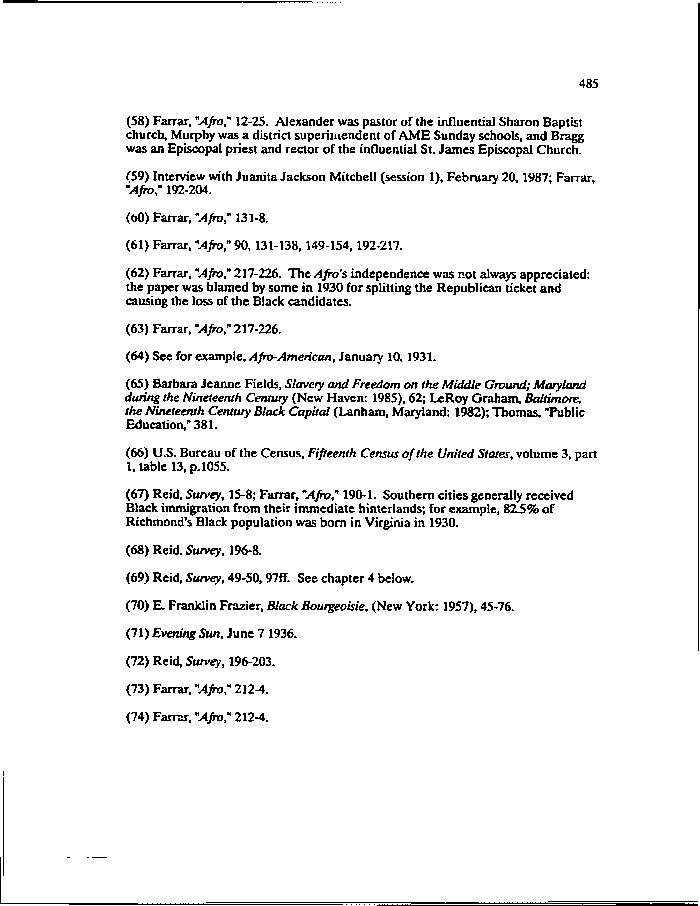|
485
(58) Farrar, "Afro," 12-25. Alexander was pastor of the influential Sharon Baptist
church, Murphy was a district superintendent of AME Sunday schools, and Bragg
was an Episcopal priest and rector of the influential St. James Episcopal Church.
(59) Interview with Juanita Jackson Mitchell (session 1), February 20,1987; Farrar,
"Afro? 192-204.
(60) Farrar, "Afro: 131-8.
(61) Farrar, "Afro," 90,131-138,149-154,192-217.
(62) Farrar, "Afro: 217-226. The Afro's independence was not always appreciated:
the paper was blamed by some in 1930 for splitting the Republican ticket and
causing the loss of the Black candidates.
(63) Farrar, "Afro: 217-226.
(64) See for example, Afro-American, January 10, 1931.
(65) Barbara Jeanne Fields, Slavery and Freedom on the Middle Ground; Maryland
during the Nineteenth Century (New Haven: 1985), 62; LeRoy Graham, Baltimore,
the Nineteenth Century Black Capital (Lanham, Maryland: 1982); Thomas, "Public
Education," 381.
(66) U.S. Bureau of the Census, Fifteenth Census of the United States, volume 3, part
1, table 13, p.1055.
(67) Reid, Survey, 15-8; Farrar, "Afro: 190-1. Southern cities generally received
Black immigration from their immediate hinterlands; for example, 82.5% of
Richmond's Black population was born in Virginia in 1930.
(68) Reid. Survey, 196-8.
(69) Reid, Survey, 49-50,97ff. See chapter 4 below.
(70) E. Franklin Frazier, Black Bourgeoisie, (New York: 1957), 45-76.
(71) Evening Sun, June 7 1936.
(72) Reid, Survey, 196-203.
(73) Farrar, "Afro: 212-4.
(74) Farrar, "Afro," 212-4.
|

